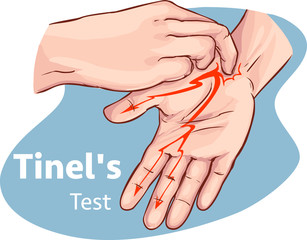
Carpal tunnel syndrome is a common condition where too much pressure of the median nerve at the wrist causes pain, numbness, and tingling of the hand and fingers. The median nerve supplies feeling to the thumb, index finger, middle finger, and half of the ring finger. The median nerve also controls the muscles in the hand at the base of the thumb.
If you think you have carpal tunnel syndrome, it is important to get evaluated and treated by an orthopedic specialist because carpal tunnel related nerve damage can become permanent over time.
